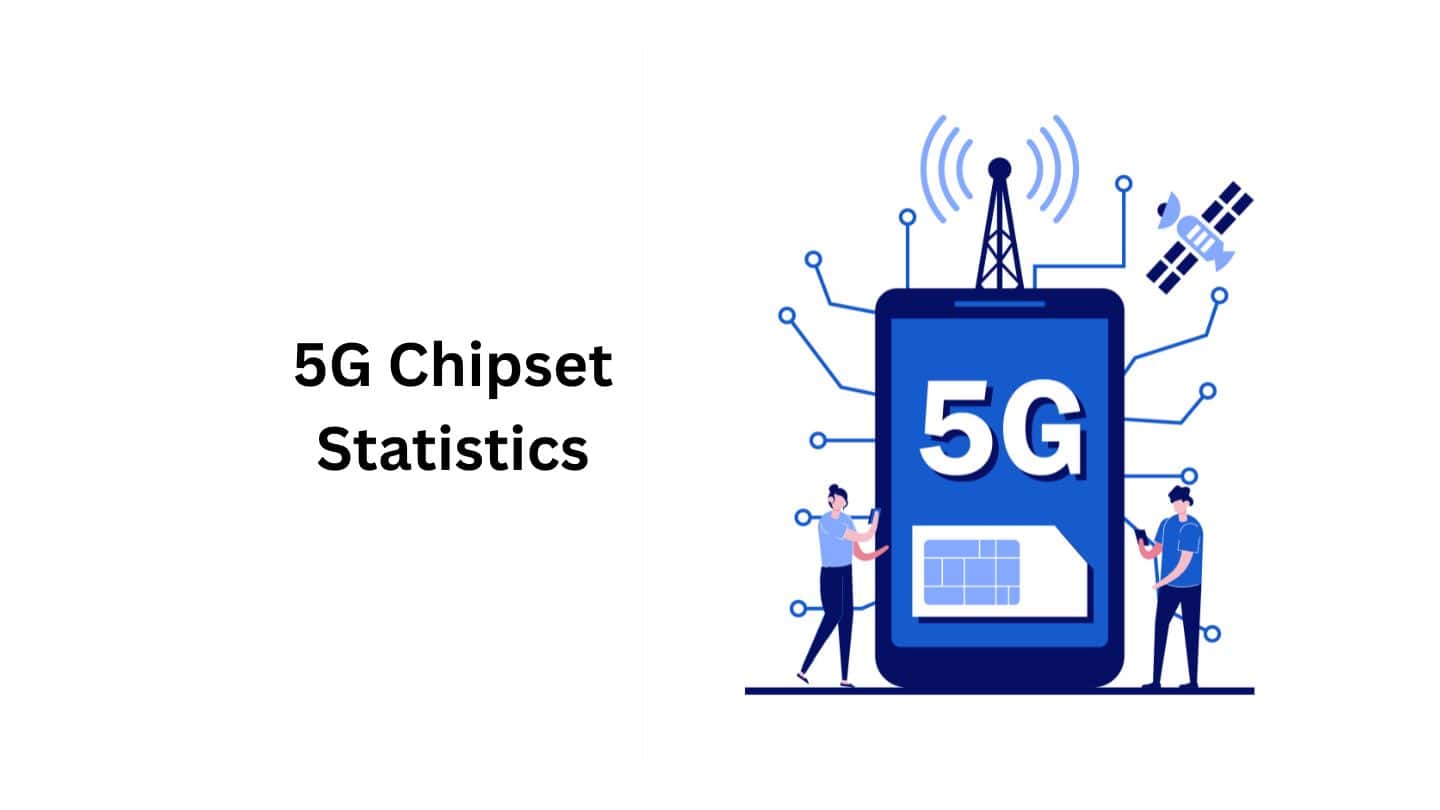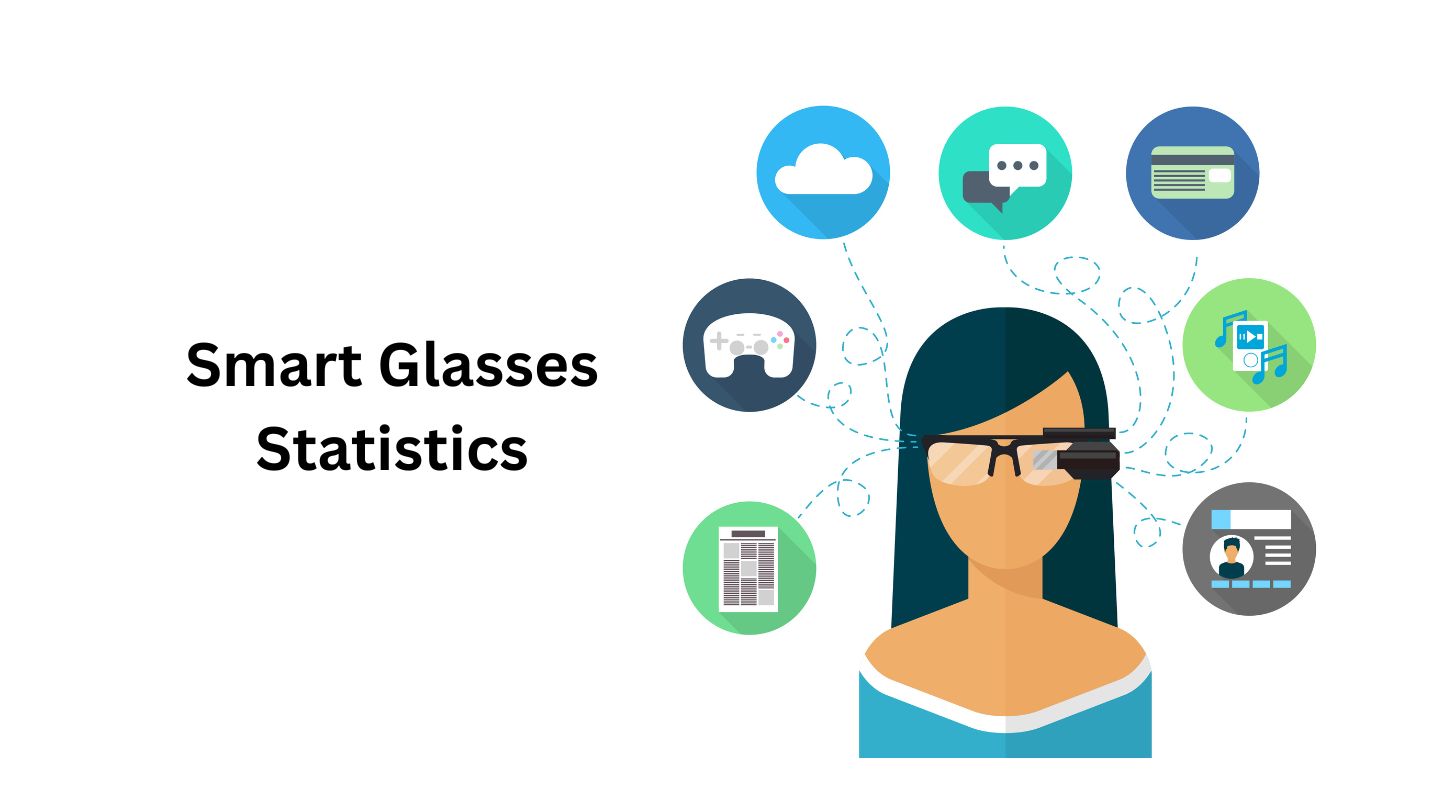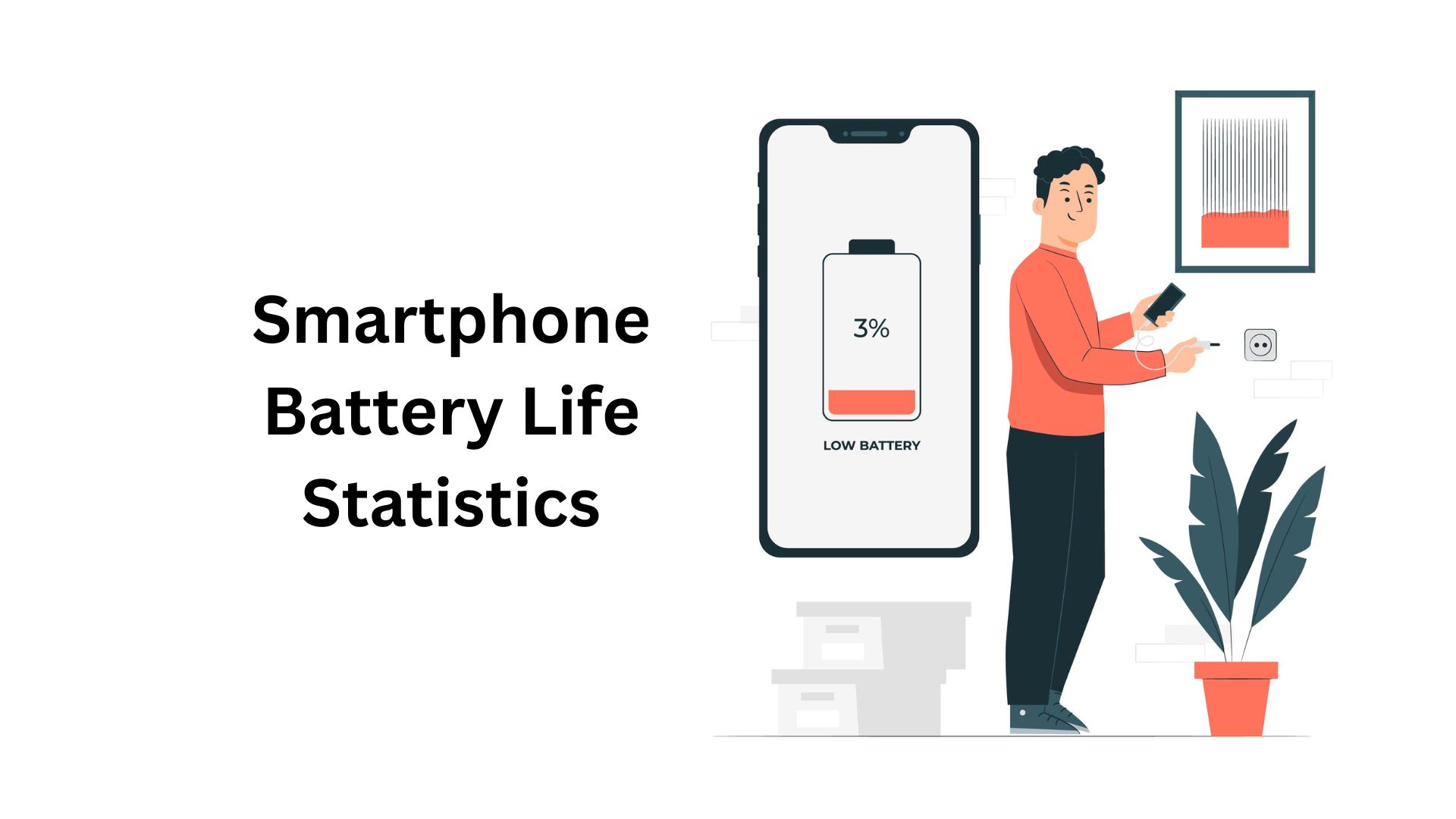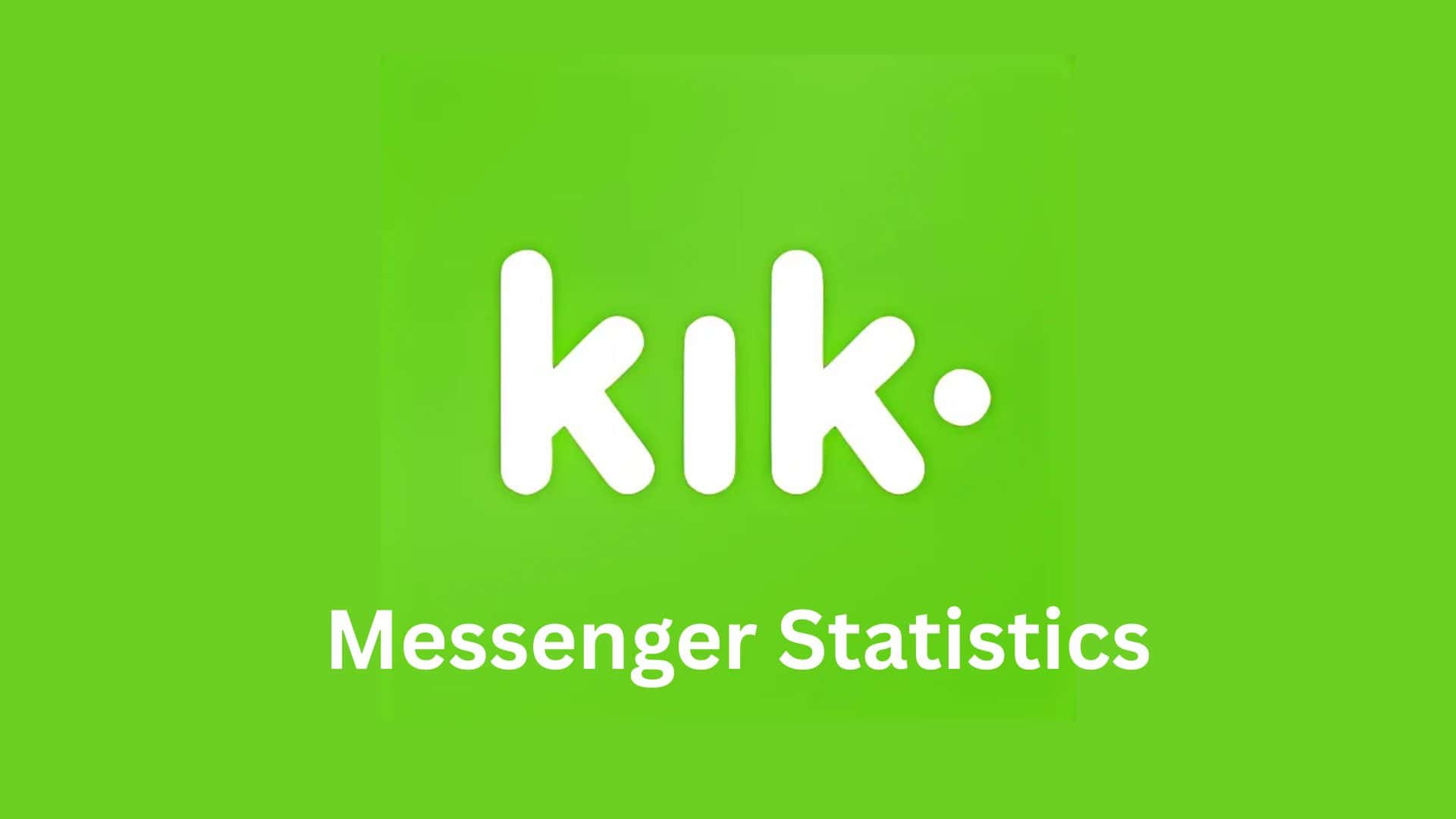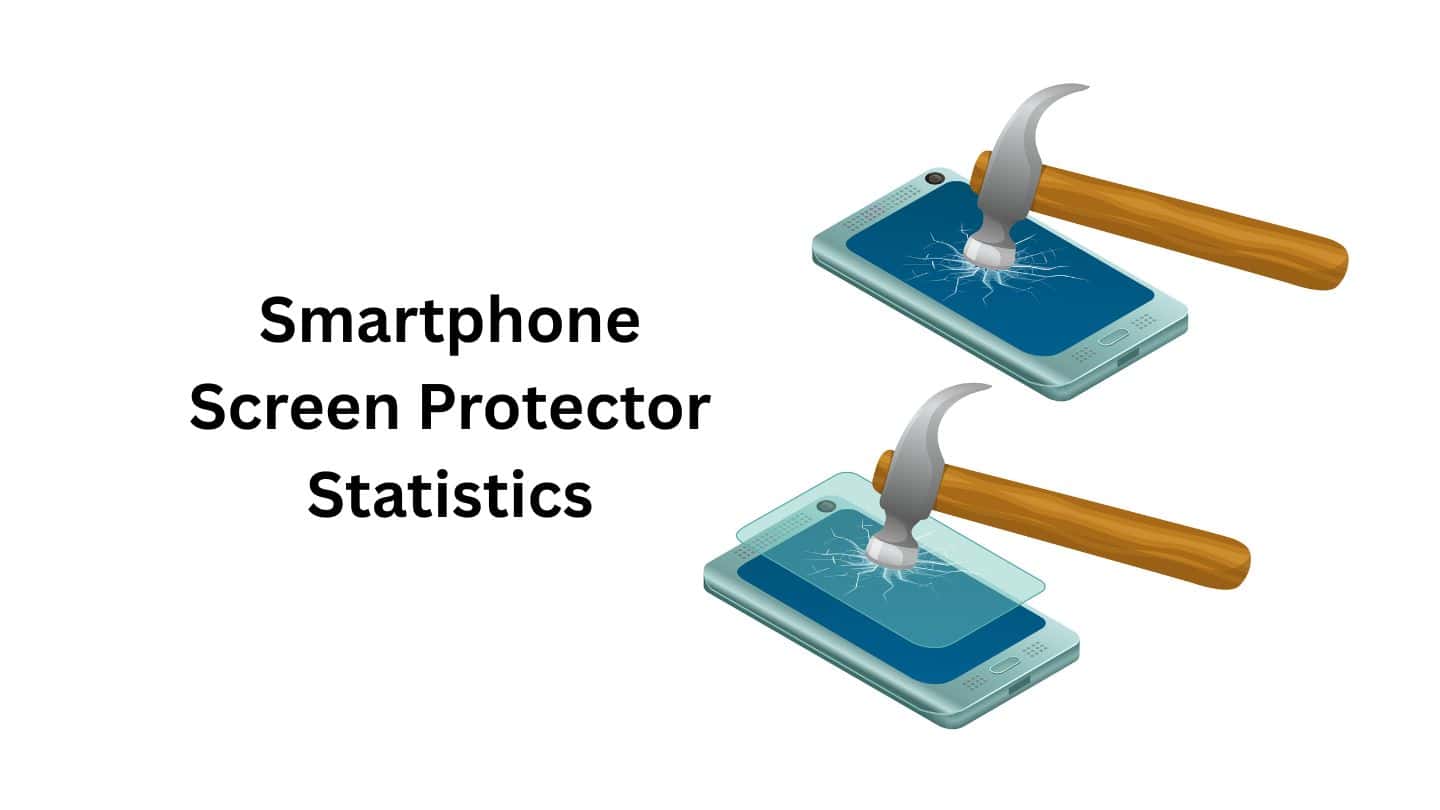5G Chipset Statistics and Facts (2025)

Updated · Apr 17, 2025


TABLE OF CONTENTS
- Introduction
- Editor’s Choice
- General 5G Chipset Statistics
- Key Features of 5G Chipsets
- Top 10 Types of 5G Chipsets
- 5G Chipset Market Size Statistics
- By 5G Chipset Key Players Share
- By End User, 2024
- By Regional Analyses
- U.S. Government Regulations For 5G Chipset Technology Statistics
- Sustainable Initiatives of 5G Chipset
- Conclusion
Introduction
5G Chipset Statistics: The 5G chipset market is growing fast as more people and businesses use 5G technology. These chipsets are small parts inside devices that help connect to 5G networks. With faster internet, better gaming, smart cars, and advanced healthcare, the demand for 5G chipsets is rising worldwide. Many tech companies are now focusing on making powerful and energy-saving chipsets to support this growth.
Countries like the US, China, and South Korea are leading in 5G use, pushing the need for these chips. This article looks at the latest numbers, trends, and future growth of the 5G chipset market in simple terms so everyone can understand what’s happening in this exciting tech space.
Editor’s Choice
- The Global 5G Chipset Market is expected to be worth around USD 317.0 billion by 2033, up from USD 36.3 billion in 2023.
- The market is growing at a CAGR of 24.2% during the forecast period from 2024 to 2033.
- Meanwhile, AI integration was expected to incorporate AI features in over 40% of 5G chipsets by 2025.
- More than 30% of smartphones will support mmWave-enabled 5G chipsets by 2024.
- Iot and Automotive Sectors expected to account for 20% of 5G chipset usage by 2025
- 5G smartphone sales are predicted to increase to 69% of global smartphone sales by 2025
- 5G Chipset Statistics show that ASICS, Sub-6 GHz, and consumer electronics hold the largest market shares, with growth rates of 88.8%, 85.4%, and 87.9%, respectively, during the forecast period.
- Samsung Electronics Co., Ltd. is a major player in the market, holding a significant 16% share.
- The MediaTek Helio M70 is a flexible chipset with 2G, 3G, 4G, and 5G networks, offering various connectivity options.
- RF and wireless chips use three primary ISM bands: 902 – 928 MHz, 2.400 – 2.500 GHz, and 5.725 – 5.875 GHz.
- 5G chipsets offer much faster data speeds than 4G, with peak speeds reaching up to 20 gigabits per second (Gbps).
General 5G Chipset Statistics
- By March 2024, 68.1% of all 5G devices will support 5G SA, up from 57.9% in December 2020.
- The number of 5G IoT connections is expected to grow 59% annually from 2024 to 2030, reaching over 800 million.
- In 2023, there were 1.28 million private 5G IoT connections worldwide, making up 5% of the 25.6 million 5G IoT connections.
- The forecast predicts that private 5G connections will grow 65.4% annually until 2030, accounting for 13% of global 5G IoT connections.
- China and Europe are key areas for private 5G growth until 2030, driven by non-industrial facilities and campuses like ports and office buildings.
- 5G Chipset Statistics also depicts that 5G chipsets are expected to play a key role as 5G networks are rolled out widely for smartphones and telecom companies.
- The rise of 5G will speed up the use of connected devices, especially in industries moving toward Industry 4.0.
- The 3gpp has set standards that require IMS for 5g-to-3 G SRVCC in Release 16, along with Vonrr, EPS FB, Volte, and RAT FB in Release 15.
- Around 80% of automakers believe 5G will be crucial for digital changes in the next five years.
- By 2025, 51% of mobile connections in the region will be on 5G networks, and there will be 340 million mobile subscribers.
- In March 2024, Qualcomm announced the Snapdragon 8s Gen 3 chipset, while Xiaomi plans to release a 5G chipset created with Unisoc in 2025.
- Qualcomm also introduced the affordable Snapdragon 4s Gen 2 in India in July 2024.
- Additionally, Apple and Qualcomm expanded their partnership for 5G modem chips until 2027.
- The first 5G chipsets were in high-end phones in 2019, followed by second-gen devices in 2020 and third-gen, performance-focused models in 2021.
Key Features of 5G Chipsets
- Frequency Bands: Sub-6 GHz (410 MHz to 7125 MHz) and mmWave (24.25 GHz to 52.6 GHz) bands.
- Peak Data Speeds: Up to 20 Gbps.
- Average Speed: 3 Mbps in the U.S.; 432 Mbps in South Korea.
- Coverage: Sub-6 GHz provides broader coverage.
- Latency: Reduced to 1 millisecond (ms).
- Capacity: 100x network efficiency compared to 4G.
- C-Band deployment: S. operators launched in 2022.
- Low-Band Speeds: 5-250 Mbps for extended coverage.
- 5G Standards: Meets IMT-2020 for maximum speeds.
- Qualcomm Snapdragon X65: Peak downlink speeds up to 10 Gbps.
- Global Adoption: Over 80 countries have deployed 5G networks.
Top 10 Types of 5G Chipsets
| Types | Specifications |
| Snapdragon 8 Gen 2 |
|
|
Exynos 2200 |
|
| Apple A16 Bionic |
|
|
Qualcomm X60 |
|
| MediaTek Dimensity 9000 |
|
|
Huawei Balong 5000 |
|
| UNISOC T7520 |
|
|
Samsung Exynos 5123 |
|
| Qualcomm X65 |
|
|
Intel XMM 8160 |
|
5G Chipset Market Size Statistics
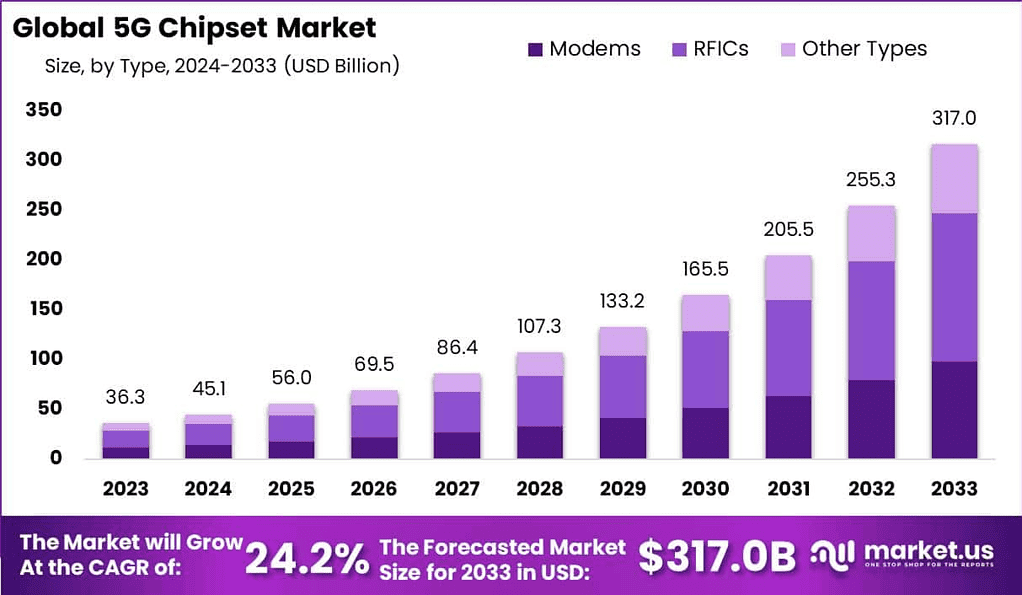
- The Global 5G Chipset Market is projected to reach approximately USD 317.0 billion by 2033, rising from USD 36.3 billion in 2023, at a CAGR of 24.2% between 2024 and 2033.
- Qualcomm has a 44% market share in the 5G chipset market, generates revenue of USD 31.5 billion, and invests USD 6.6 billion in research and development.
- MediaTek ranks second with a 26% market share, achieving USD 15.8 billion in revenue and spending USD 2.3 billion on R&D.
- The RFICs segment dominated the market in 2023, accounting for over 47% share, due to their essential role in managing complex radio frequency functions within 5G networks.
- The Sub-6 GHz segment captured more than 58% of the market in 2023, supported by its optimal balance of coverage and capacity.
- In 2023, the smartphone and Tablet segment had over 35% of the market share, fueled by the rising global adoption of smart devices.
- The IT & Telecom sector led the end-use verticals in 2023, holding a market share of over 25%, driven by its rapid uptake of 5G technologies.
- North America emerged as the top regional market in 2023, securing over 30% of the global share, primarily due to early infrastructure investments and aggressive technology adoption.
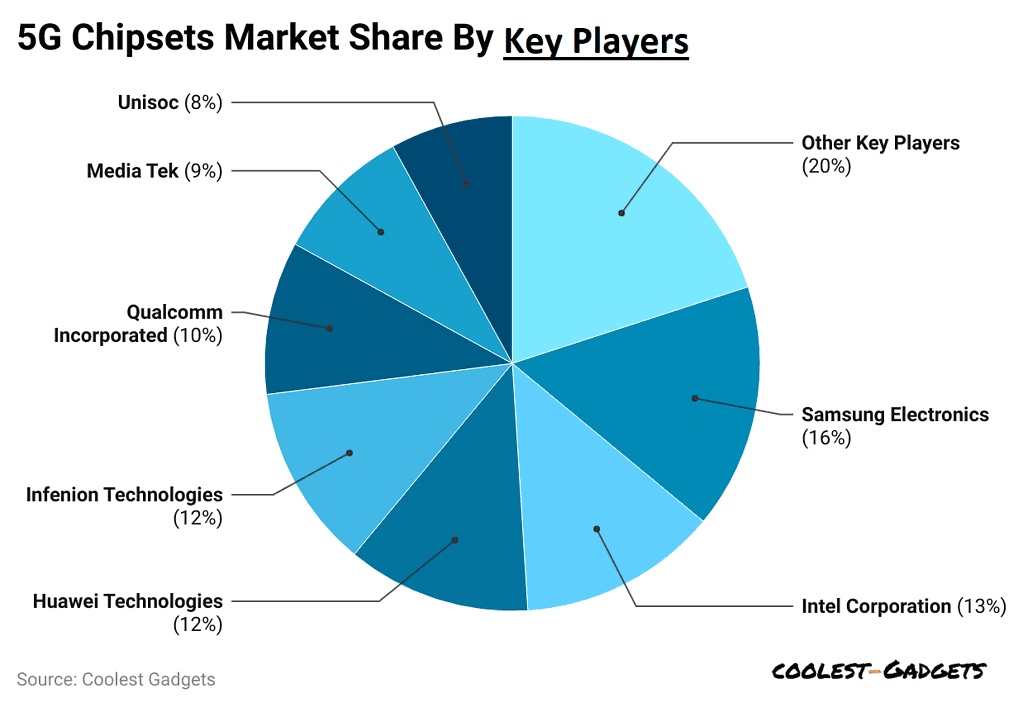
(Reference: scoop.market.us)
- According to 5G Chipset Statistics, Samsung Electronics has a 16% share of the 5G chipset market.
- Close behind, Qualcomm takes up 10% of the market, recognised for its innovations in wireless technology.
- Huawei Technologies and Infineon Technologies hold 12%, representing global influence and cutting-edge contributions.
- Intel is another major player, with a 13% share. It also uses its semiconductor expertise to lead the industry.
- MediaTek and Unisoc Communications represent 9% and 8%, respectively.
- Other companies account for the remaining 20%, reflecting the competitiveness and variety within the 5G chipset market.
By End User, 2024
| End User Industry | Estimated Market Share |
| Consumer Electronics |
65 to 60% |
|
Automotive & Transportation |
15 to 20% |
| Industrial Automation & Iot |
10 to 15% |
|
Healthcare |
5 to 10% |
| Others (Retail, Energy, etc.) |
5 to 10% |
By Regional Analyses
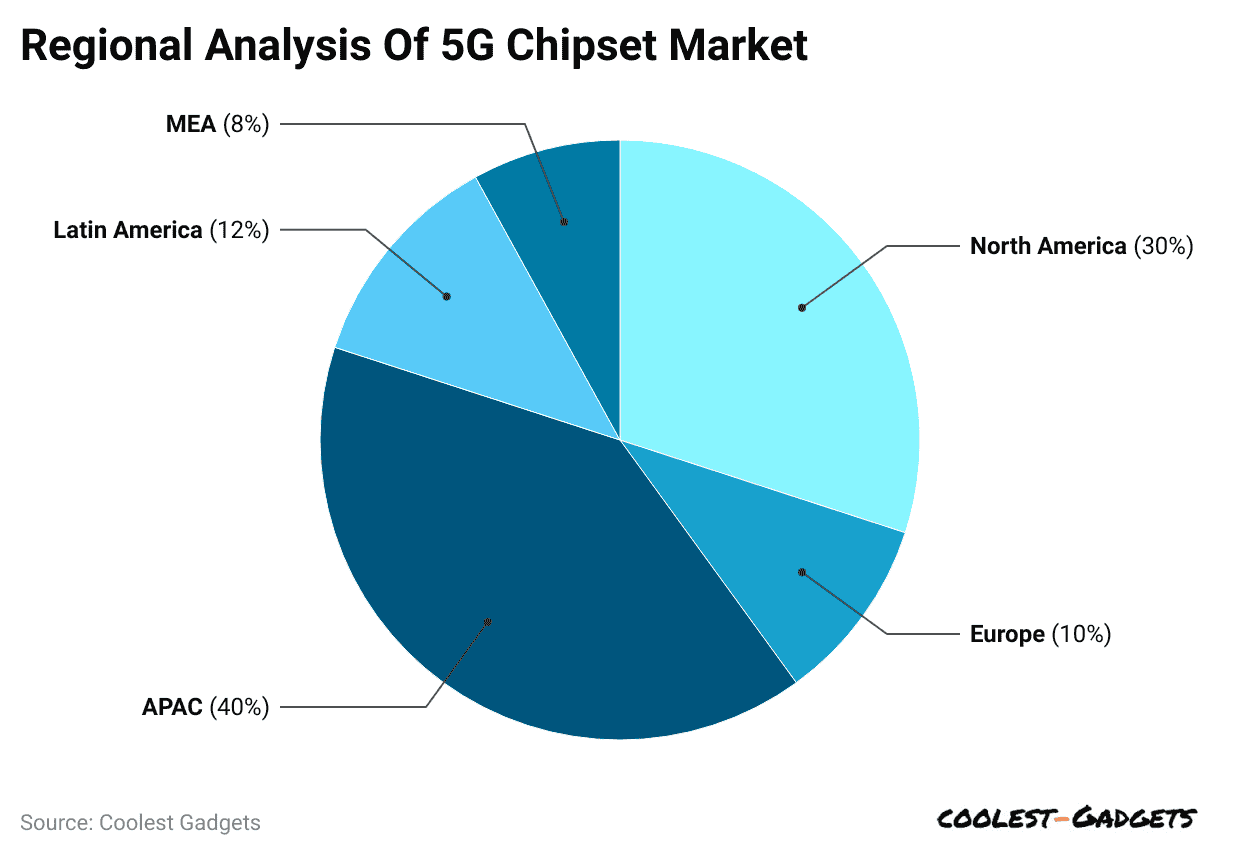 (Reference: scoop.market.us)
(Reference: scoop.market.us)
- In recent years, the Asia-Pacific (APAC) region has dominated the 5G Chipset market with a substantial 40.0% share, followed by the North American region with a share of 30%.
- 5G Chipset Statistics further elaborated that Europe’s market share is 10.0%, while Latin America holds 12.0%.
- Lastly, the Middle East and Africa (MEA) region accounts for 8.0% of the market share.
U.S. Government Regulations For 5G Chipset Technology Statistics
- In recent years, 5G technology made 70 MHz of the 600 MHz spectrum available for mobile use by repurposing it through a broadcast incentive auction.
- The Federal Communications Commission (FCC) also held auctions in June 2020 for 70 MHz priority access licenses in the 3.5 GHz band.
- The FCC is now investigating making the C-band spectrum, which ranges from 3.7 GHz to 4.2 GHz, available for 5G use soon.
- In addition, the National Telecommunications and Information Administration (NTIA) is studying the possibility of allowing commercial operations in the 3.45-3.5 GHz band.
- For the high-band spectrum, the FCC has recently completed auctions for key millimetre-wave frequencies, including the 28 GHz and 24 GHz bands, helping to expand 5G coverage.
Sustainable Initiatives of 5G Chipset
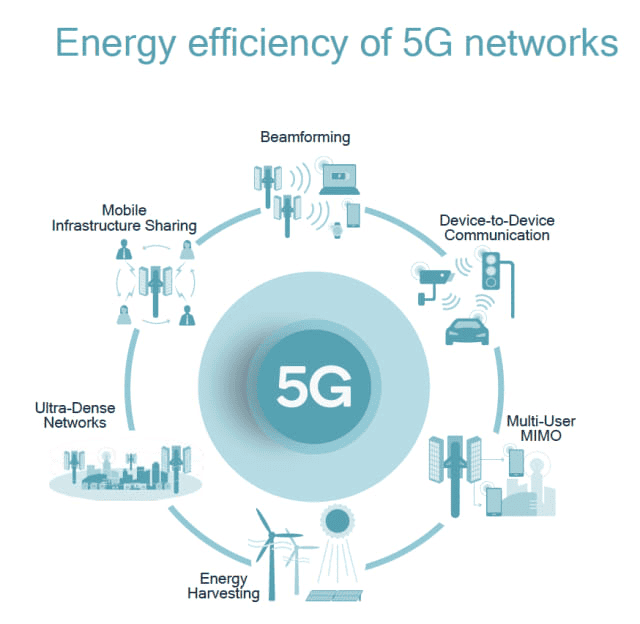 (Source: thebrief.co)
(Source: thebrief.co)
- 5G chipsets are designed to be up to 90% more energy-efficient per traffic unit than 4G.
- The global adoption of 5G technology is projected to save up to 21 gigatons of CO₂ emissions by 2030, with full deployment potentially increasing this figure to 37 gigatons.
- 5G-powered smart cities enable automation that saves energy and reduces carbon emissions.
- Integrating AI and ML in 5G networks optimises energy consumption by dynamically adjusting network operations based on real-time data.
- Private 5G networks are being deployed to enhance energy efficiency in industrial operations.
Conclusion
5G chipsets enable faster internet speeds, better connectivity, and smoother device experiences. These chipsets are the backbone of the 5G network, allowing users to enjoy high-speed data, low latency, and reliable connections. As technology evolves, 5G chipsets will be crucial in advancing industries like gaming, healthcare, and smart cities.
With ongoing improvements in chipset design, the future of 5G looks promising. 5G chipsets are shaping a faster, more connected world by offering innovative solutions to enhance our everyday lives.
Sources
FAQ.
A 5G chipset boosts connectivity by providing faster data speeds, lower latency, and better network stability for devices.
5G chipsets improve smartphone speed, enable faster downloads, better streaming, and lower latency, and support more connected devices.
5G chipsets offer faster internet speeds, lower latency, and better connection reliability than 4G chipsets. They support more devices simultaneously and are designed for advanced features like virtual reality and smart cities.
Yes, 5G chipsets can support older network generations like 4G, 3G, and 2G alongside 5G.
5G chipsets enhance AI by providing faster data transfer, reducing latency, and enabling real-time processing and smarter applications.
As demand for faster networks and devices grows, 5G chipsets will stay relevant for 5-10 years.

Barry Elad is a tech enthusiast passionate about exploring various technology topics. He collects key statistics and facts to make tech easier to understand. Barry focuses on software and its benefits for everyday life. In his free time, he enjoys creating healthy recipes, practicing yoga, meditating, and walking in nature with his child. Barry's mission is to simplify complex tech information for everyone.


